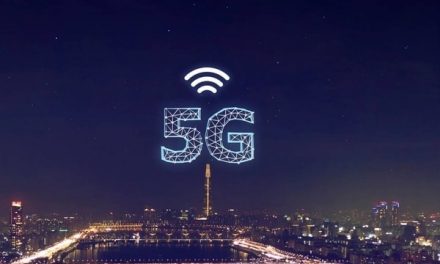If it wasn’t for AMD Zen 3 processors, announced just a few weeks ago and yet to reach the market in any meaningful way, you could have said that November 17, 2020, was a bloodbath for Intel and AMD processors. On Tuesday Apple’s new MacBooks and the Mac mini became available. Outwardly, there is nothing strikingly new about the late 2020 MacBook Air, MacBook Pro 13-inch, and Mac mini. But inside them, a revolution is going on. These are the first three computers from Apple that use the company’s new M1 processor. In other words, there is no Intel inside, there is no AMD inside, and this moment is the beginning of a chip war that will shape what sort of computers we use in the coming years.
A little bit of context first. That will make it easy to follow the argument. Since a long long time ago, or rather late 1970s when Intel came out with computer processors that used X86 architecture, the X86 has powered the computing world. All processors that Intel and AMD make use X86 architecture and it is these processors that go into almost all laptops and desktops, as well most servers.
However, starting the late 2000s, ARM came on the scene. It wasn’t new. ARM has been around since the early 1980s. But the processors made using ARM architecture were low-power and low-performance chips. They were used in appliances and industrial machines. They were rarely used in general purpose computers. That was until smartphones started coming out. Smartphones, although they behaved and worked like computers, used ARM processors.
In a few years, say by the early 2010s, the world of computers was divided into two camps. On one side, there were ARM-powered smartphones and tablets, and occasional laptops. The processors in these devices were power-efficient and good enough. On the other side, there were laptops, desktops, and servers. The processors in these devices were power-hungry and extremely fast.
But gradually the talk started that the two worlds needed to merge, or rather it was time to choose one over another. Apple, which started by putting an off-the-shelf ARM processor in the iPhone in 2007, started designing and making its own processor using ARM architecture with A4, which went in the iPhone 4. Soon, with the A7 aka Cyclone in the iPhone 5S, the company was talking of desktop-class performance in a phone. It argued that ARM chips are not only power-efficient but they could also be faster than Intel and AMD processors.
Until this month, this was mostly a talk. Now, it is not. By creating the M1 processor, and by putting it in its top-selling computers MacBook Air and MacBook Pro 13-inch Apple is showing that there is a world beyond X86, Intel, and AMD.
Here is a quick summary of the lessons M1 brings (on the basis of M1 MacBook benchmarks and reviews):
— A processor like M1 is much more power-efficient than something like Intel Core i3 or AMD Ryzen 4000. Battery life in late 2020 MacBook Pro 13-inch and MacBook Air is significantly higher.
— According to benchmarks M1, despite its low power use, beats or matches Intel and AMD processors. It even trades blows with the top-of-the-line AMD Ryzen 5950X, which for now can still be considered the world’s fastest general-purpose processor.
— The integrated graphics processors in M1 are as fast as mainstream but slightly old — dedicated graphics cards like Nvidia GTX 1650, again at a significantly lower power use.
— The M1 is an architectural and technology leap in processor space not seen in decades. It’s mind-blowing.
— If done right, it is possible to go past the legacy software support for X86 processors. The M1 MacBooks can run software written for X86 processors well enough through Rosetta 2. This opens new possibilities.
A new future
In other words, the M1 is the beginning of an exciting future. It should also start the end of X86 that, for reasons imaginary or real, seems stuck in a rut. In the last eight years or so, Intel has moved the needle little when it comes to its processors for laptops or desktops. The most exciting work in the space has been done by AMD, but AMD has managed to get its act together only in the last few years, starting with the first-gen Ryzen. Otherwise, both AMD and Intel have just pushed the thermal envelope in their processors to get better performance. On the graphics side, it is the same. 250W graphics cards are now common and that is crazy.
Incremental performance updates, processors and chips that are ever increasingly more power hungry are not what laptop and desktops users deserve. Instead, they deserve something like the new MacBook Air, which is fast and silent with its fan-less design.
Now, it is true that M1 and the subsequent Apple processors will only go in the Apple devices. But there is a hope that the M1 will force everyone in the industry to take note and focus on creating better processors. The technologies that it brings are, such as the fresh chip architecture or the unified memory, can be replicated, fine-tuned, bettered by others like Qualcomm, Intel and AMD.
The Apple move will also force software developers to write code for ARM and that will help with the transition away from X86, if that is indeed needed to push computers forward.
So, what’s the problem?
But like every other change, it can’t be all rosy. Though, for now, we do not exactly know how the computing industry is going to respond to the M1. Apart from showing what ARM architecture can do, the M1 also shows the power of an integrated processor or an integrated device. In other words, it shows that computers also need to change in the way they are packaged and sold. They need to go beyond general-purpose computing. They can have a unified memory. They can have separate neural processors. They can have dedicated integrated chips for specialized tasks like encryption, machine learning, video, and photo editing, security, all of them fine-tuned for specific software. This is fraught with some risk.
I feel that the new MacBook Air, Mac mini, and the MacBook Pro are also so good because they are extremely integrated devices. All components in them are customized and honed to work cohesively with custom and proprietary software, just like how it happens in a smartphone. And just like smartphones, they are black-boxes, where consumers don’t have to worry about specs or quality of parts.
A lot of users won’t mind such a machine. In fact, most will not. But some may do. The way the PC is flexibility and openness. For example, you cannot assemble a Mac Pro. But you can assemble a killer rig powered by Windows and full of parts made by companies like Intel and AMD.
If M1 is the future, will consumers lose the ability to customize our computers to our heart’s content and then effectively lose the bargaining power that they hold when they are buying a computer? Maybe. Or maybe not. It all depends on how companies like AMD and Intel respond to M1. Or the direction that will be taken by a company like Qualcomm or Nvidia, or some new player like Nuvia, which has been co-founded by the man who headed Apple’s chip division.
There is every possibility that something like M1 can also be made available to consumers in a flexible and open system. The problem is that when big shifts come and a new era starts, the old rules and customs are discarded. In the new future, it is possible that companies making computer hardware may end up redrawing their contract with consumers, and this new contract may follow the pattern set by smartphones and not the one used in the desktop and laptop market.












